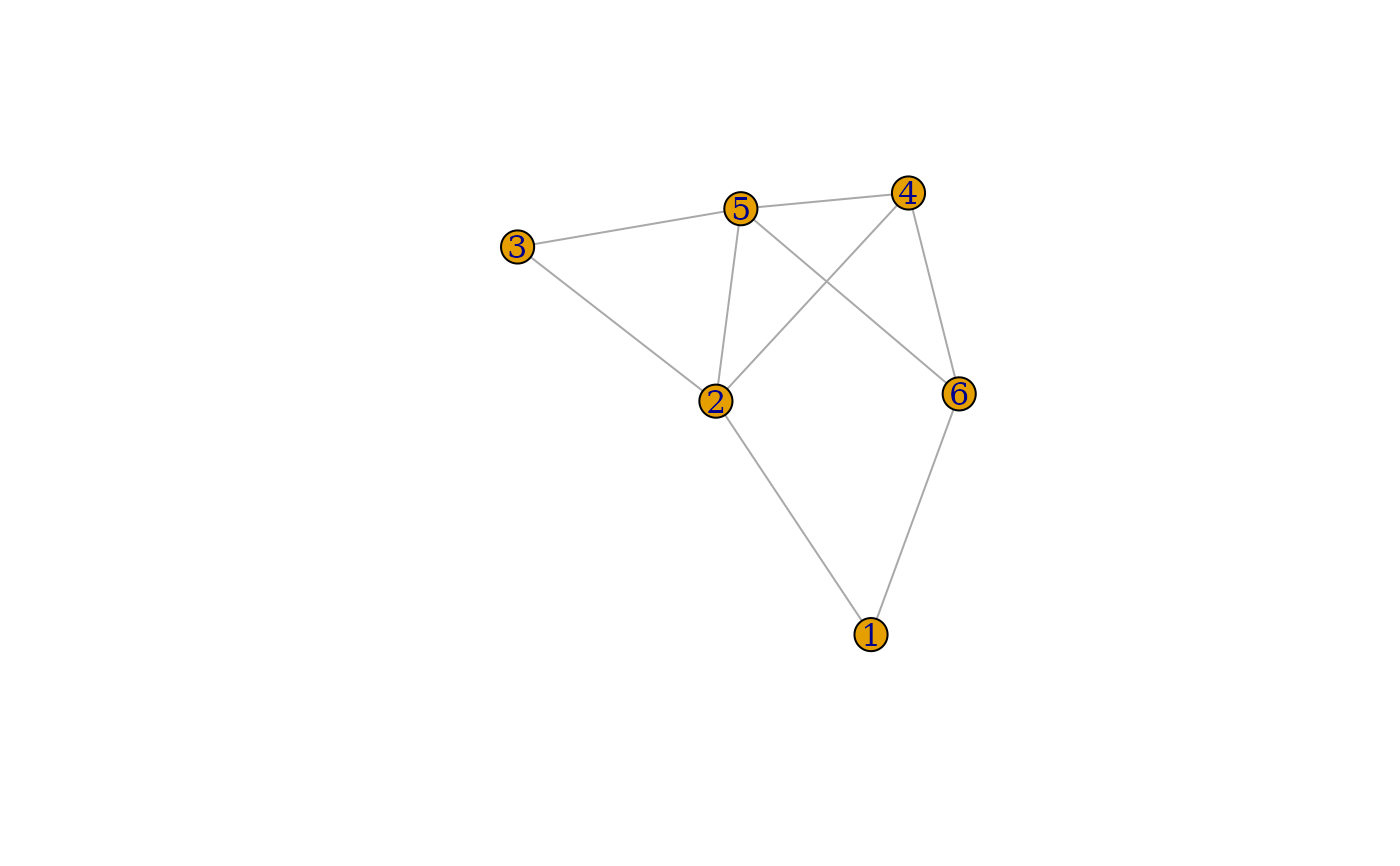
Generate random graphs according to the \(G(n,p)\) Erdős-Rényi model
Source:R/games.R
sample_gnp.RdEvery possible edge is created independently with the same probability p.
This model is also referred to as a Bernoulli random graph since the
connectivity status of vertex pairs follows a Bernoulli distribution.
Details
The graph has n vertices and each pair of vertices is connected
with the same probability p. The loops parameter controls whether
self-connections are also considered. This model effectively constrains
the average number of edges, \(p m_\text{max}\), where \(m_\text{max}\)
is the largest possible number of edges, which depends on whether the
graph is directed or undirected and whether self-loops are allowed.
See also
Random graph models (games)
bipartite_gnm(),
erdos.renyi.game(),
sample_(),
sample_bipartite(),
sample_chung_lu(),
sample_correlated_gnp(),
sample_correlated_gnp_pair(),
sample_degseq(),
sample_dot_product(),
sample_fitness(),
sample_fitness_pl(),
sample_forestfire(),
sample_gnm(),
sample_grg(),
sample_growing(),
sample_hierarchical_sbm(),
sample_islands(),
sample_k_regular(),
sample_last_cit(),
sample_pa(),
sample_pa_age(),
sample_pref(),
sample_sbm(),
sample_smallworld(),
sample_traits_callaway(),
sample_tree()
Author
Gabor Csardi csardi.gabor@gmail.com
Examples
# Random graph with expected mean degree of 2
g <- sample_gnp(1000, 2 / 1000)
mean(degree(g))
#> [1] 2.016
degree_distribution(g)
#> [1] 0.124 0.271 0.281 0.180 0.092 0.039 0.011 0.002
# Pick a simple graph on 6 vertices uniformly at random
plot(sample_gnp(6, 0.5))
